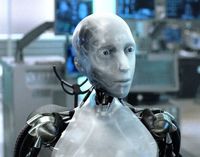
Nvidia’s data center sales have been doubling for years now. During the most recent quarter they came to $26.2 billion. But that doesn’t mean they will be $60 billion in next year’s June quarter.
Nvidia needs a new catalyst, a new story. The data center story is dying because Huang’s Law ignores Moore’s Law in important ways. Most important, it ignores the power problem. Nvidia’s Hopper and Blackwell chips will give off a ton of heat, using a ton of power, and while the heat can be dissipated by soaking them in liquid (which heats more slowly than air), they’re still sucking up all the power in the grid. Cloud Czars and Nvidia AI enthusiasts are even slowing their roll on closing off coal.
What they don’t talk about is how they’re going to pay for all this energy. Older data centers were green. They used renewable energy, and their heat was recycled. The folks now buying data centers, like Elon Musk and Larry Ellison, don’t care about any of this. But they’re still going to have a tough time paying their energy bills.
Which means Jensen needs a new story.
The New Story

Robots require many different technologies, which have been moving along in parallel for years. Cars are driving physical intelligence and sensory input like eyes. Data centers are driving application intelligence and will become the servers to the robotic clients. (They won’t be disconnected from the network.) Factories have been working on physical design, with a lot of work now done with robotic help.
What we think about most, however, is the physical being, an autonomous, electronic “life form” that looks and works like us. We are still a few years away from that, but Huang is already writing the operating system with Nvidia Isaac. By simulating the full stack in software and data centers, he’ll be ready when the hardware is.
Jensen’s Dream

Once you have a robot with a personality that’s safe, one you trust to wipe your butt, that’s when the market explodes. If it can wipe my butt, it can wipe a kid’s butt. It takes tremendous sensitivity to do that. It should be seen as the ultimate pre-market test.
Robot companions will result in market acceptance that results in robot cops, robot childcare, and robot construction. The robot’s brain and interfaces must build trust with a patient who may be losing his or her mind, or one who hasn’t acquired it yet. The hands must be soft and sensitive to get the job done. The cost must be affordable, first for a billionaire’s lair, then declining to what’s affordable by a mere millionaire, and then to a mass market.
This may be one of the biggest opportunities of the 2030s, and Jensen is right to look toward it.
But I still think they’ll be a data center bust to get through first.










